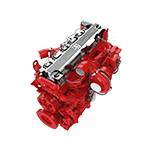Nov . 03, 2024 16:03 Back to list
can brake drums warp
Understanding Brake Drum Warping Causes and Solutions
Brake drums play a critical role in the safety and performance of a vehicle's braking system. Comprised of robust metal, these components are designed to withstand intense heat generated during braking. However, under certain conditions, brake drums can warp, leading to diminished braking efficiency and increased wear on the brake components. In this article, we will explore the causes of brake drum warping and what can be done to mitigate this issue.
What Causes Brake Drums to Warp?
1. Excessive Heat When brakes are applied, friction generates heat. If the temperatures become excessively high, the metal of the brake drum may begin to deform. This heat can come from frequent heavy braking, driving on steep gradients, or overloading the vehicle. In essence, the braking system is pushed beyond its thermal limits.
2. Improper Installation Brake drums must be installed correctly to function effectively. Uneven tightening of lug nuts or misalignment can lead to uneven pressure during braking, which creates hot spots on the drum surface. Over time, these hot spots can cause warping.
3. Worn Out Brake Components If brake pads are worn unevenly or are not replaced at regular intervals, they can create inconsistent contact with the brake drum. This inconsistency can increase the likelihood of warping as certain areas of the drum may endure more friction and heat than others.
4. Moisture Exposure Brake drums can become exposed to moisture from rain, snow, or road debris. If a wet drum is subjected to sudden heavy braking, the rapid temperature change can cause warping. Additionally, corrosion may develop, further weakening the structure of the drum.
can brake drums warp

How to Prevent Brake Drum Warping
1. Regular Maintenance Routine inspections of the braking system are essential. Mechanics should check not only the condition of the brake drums but also the brake pads, shoes, and other components. Ensuring that these parts are in good condition can help maintain even pressure and heat distribution.
2. Proper Installation When replacing brake drums, it is crucial to follow the manufacturer's guidelines for installation. This includes using a torque wrench to tighten lug nuts evenly and ensuring that the drum is installed correctly to avoid misalignment.
3. Driving Habits Drivers can help reduce the risk of brake drum warping by adopting smoother driving habits. Abrupt stops and heavy braking should be minimized, especially in heavy traffic or on inclines. Using engine braking when appropriate can also reduce reliance on the brake system, thereby minimizing heat buildup.
4. Quality Components Investing in high-quality brake drums and pads can make a significant difference in performance. Quality components are designed to withstand higher temperatures and offer better durability, ultimately reducing the likelihood of warping.
Conclusion
Brake drum warping is a serious issue that can compromise vehicle safety. By understanding the causes and implementing preventative measures, drivers can enhance their vehicle's performance and longevity. Regular maintenance, responsible driving, and proper component selection are key to ensuring that brake drums function optimally and remain warp-free, providing reliable stopping power when needed most.
-
Volvo Brake Drum: OEM Quality, Optimal Safety
NewsAug.27,2025
-
Durable Brake Drum MAZ for Heavy Duty Trucks | High Performance
NewsAug.26,2025
-
FUWA: Premium Quality, Reliable Performance & Innovative Solutions
NewsAug.25,2025
-
Liza Brake Drum: Superior Quality & Performance for Safe Driving
NewsAug.24,2025
-
Iveco Brake Drum | Premium OE Quality for Daily & Eurocargo
NewsAug.22,2025
-
Your Brake Drum Man: Quality & Performance Parts
NewsAug.21,2025
